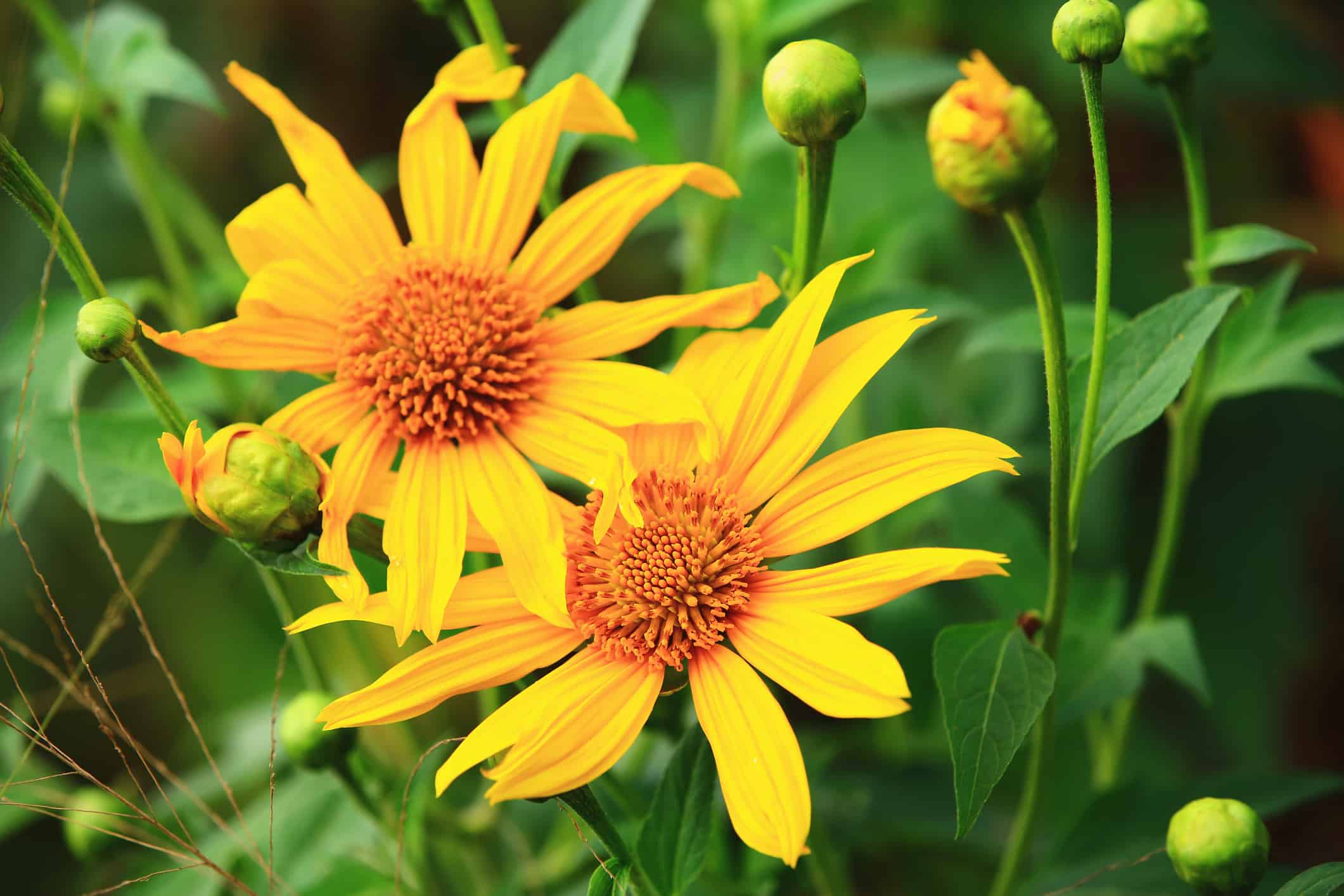Nothing says “summer” quite like a towering row of sunflowers swaying in the breeze. The gloriously bright petals and large flowerheads give your garden a welcoming and cheerful appearance. Sunflowers look especially radiant when grown alongside companion plants like brown-eyed Susans and sage. Use this list for ideas when you’re wondering what to plant next to your sunflowers.
Sunflower Companion Plants: Flowers
So many flowers flourish amongst sunflowers that it can be hard to decide what to plant. Let’s look at some of the best options.
1. Marigolds (Tagetes erecta Linn.)
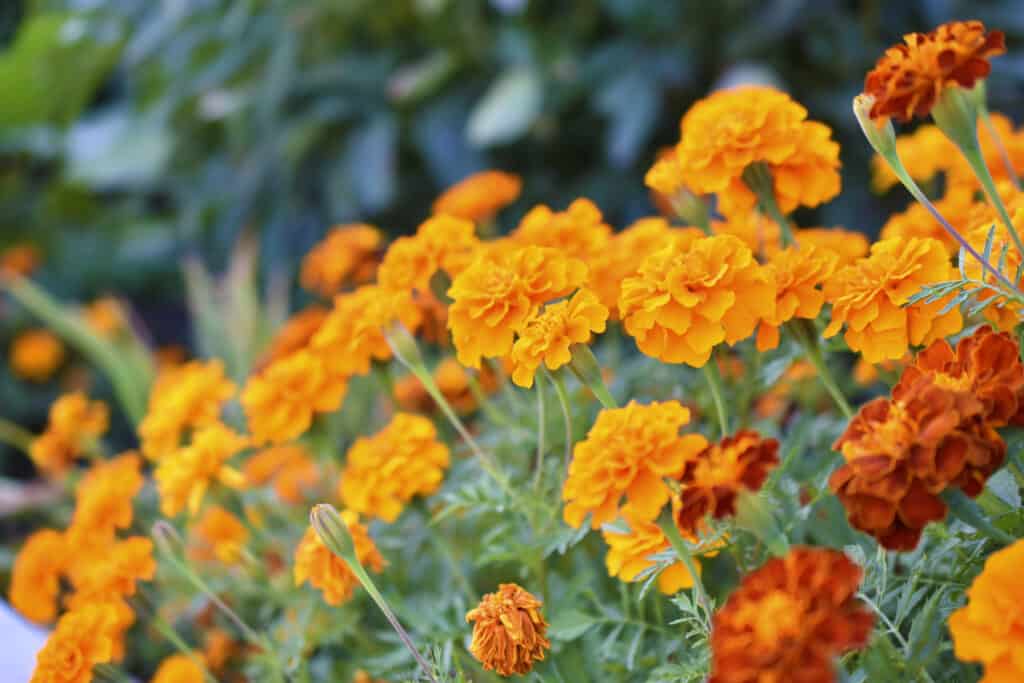
Pretty marigolds emit a scent that repels some insects.
©iStock.com/Valeriy Lushchikov
Marigolds are perfect sunflower companion plants because they provide protection. The flowers have a strong scent that acts as an effective pest-deterrent, repulsing Insects that might harm sunflowers, like beetles and aphids.
2. Snapdragons (Antirrhinum majus)
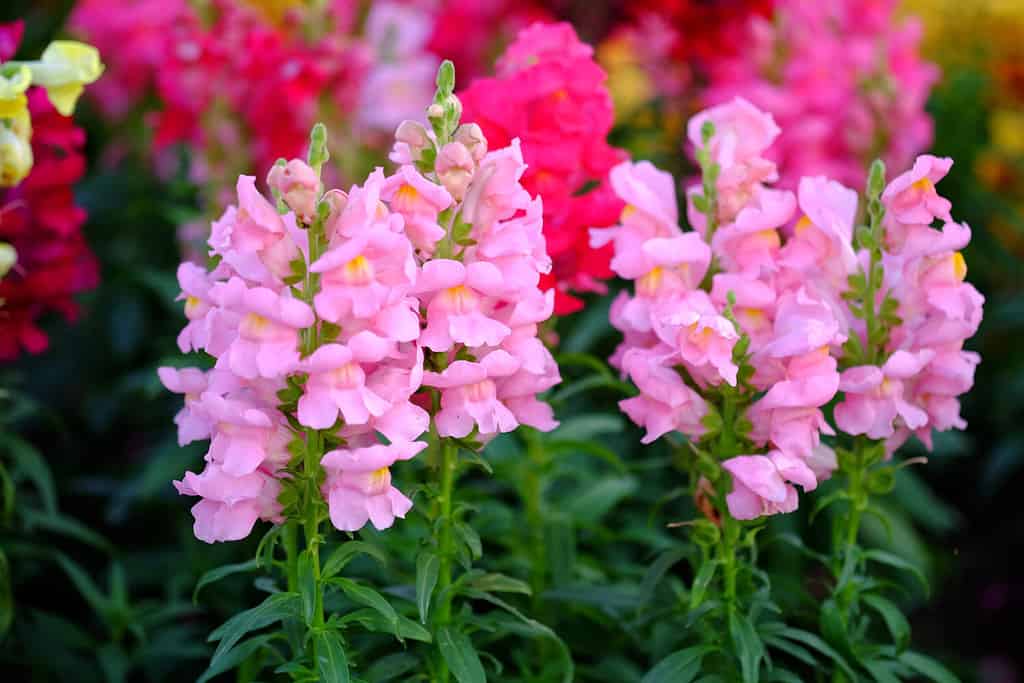
Snapdragons can bask in the shade provided by sunflowers.
©Nualanong/Shutterstock.com
Plant snapdragons near your sunflowers and take advantage of the shade the sunflowers provide. The snapdragons will thrive longer, and you can enjoy a healthy, colorful garden.
3. Nasturtiums (Tropaeolum spp.)
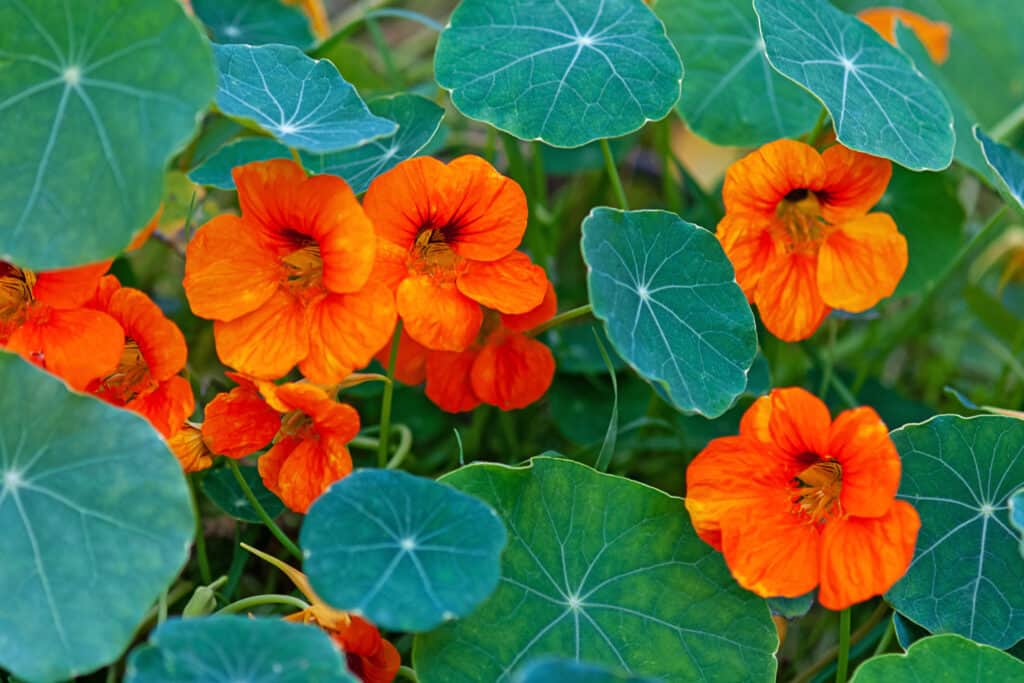
These bright flowers attract pollinators.
©iStock.com/Nadya So
Nasturtiums bring gorgeous shades of red, yellow, and orange to your garden. The colors are like beacons for pollinators and beneficial insects. The flowers also suppress weeds and trap moisture in the soil.
You can plant nasturtiums underneath the taller sunflowers.
4. Brown-Eyed Susans (Rudbeckia triloba)

Brown-eyed susans look similar to sunflowers.
©APugach/Shutterstock.com
Their yellow color and slim petals make brown-eyed Susans look like mini yellow sunflowers, so they’re fitting sunflower companion plants. The advantages aren’t purely aesthetic, however. Beneficial insects like ladybugs and lacewings flock to these flowers.
5. Sweet Alyssum (Lobularia maritima)

Sweet Alyssum adds a pop of color to your sunflower garden.
©iStock.com/Sundry Photography
Bunches of sweet alyssum attract hordes of pollinators, as well as aphid-eaters like syrphid flies and lady beetles.
Sunflower Companion Plants: Vegetables
Sunflowers add beauty to your vegetable garden and can even help the veggies grow!
1. Onions (Allium cepa)
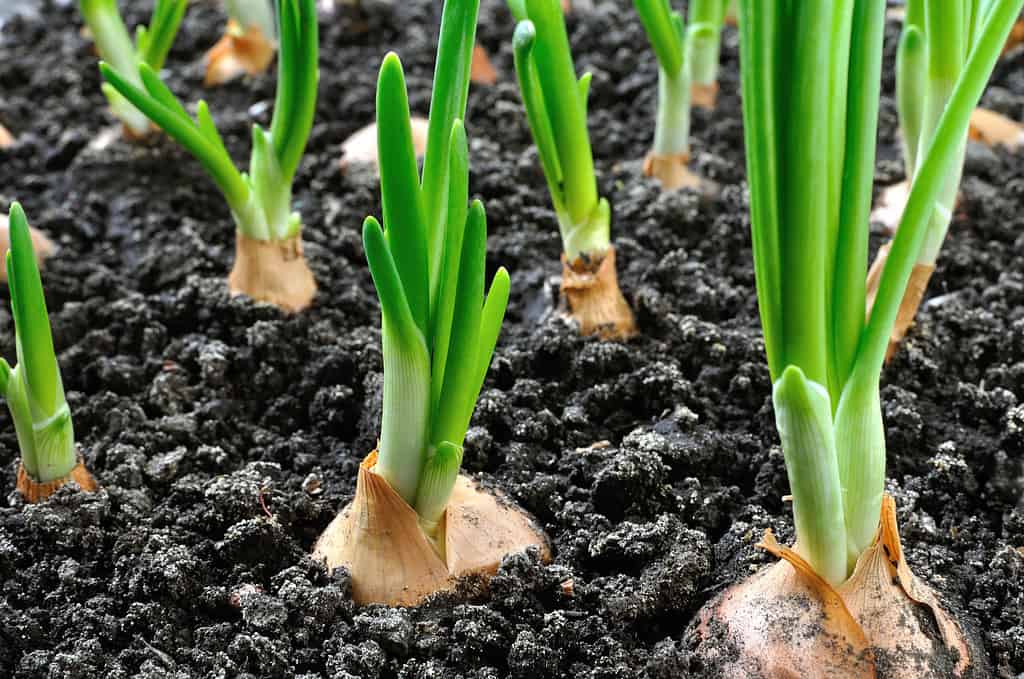
Onions grow well next to sunflowers.
©yuris/Shutterstock.com
Interested in growing vegetables, too? Onions and sunflowers are great companions. The onion’s smell can deter squirrels and other animals that eat sunflower seeds, while the large sunflowers offer shade.
2. Corn (Zea mays)
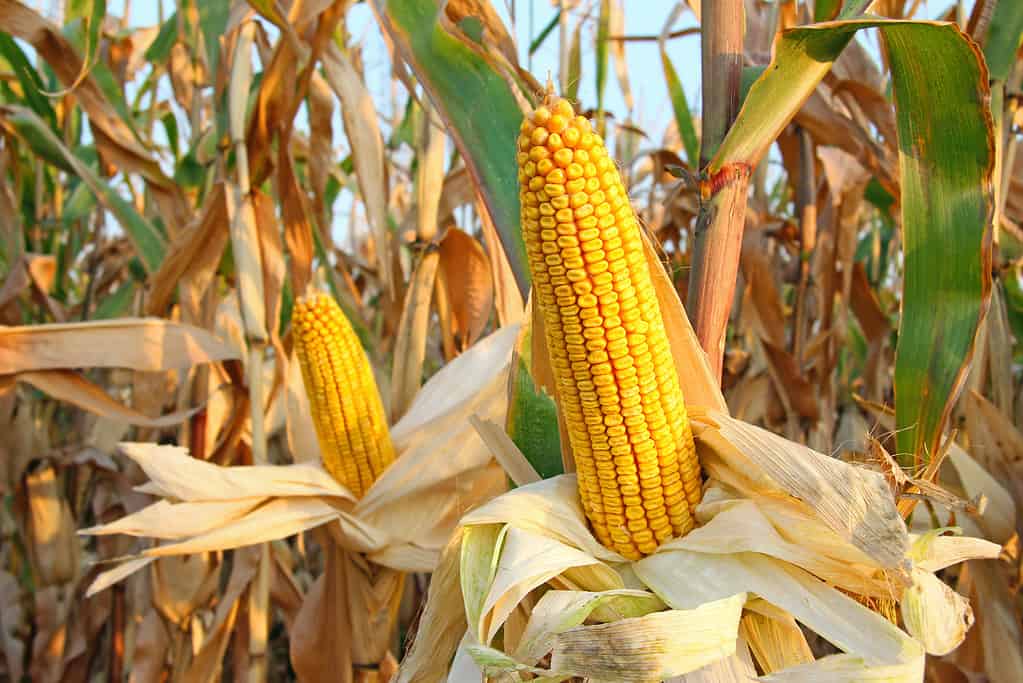
Sunflowers and corn are often harvested in October.
©iStock.com/branex
Corn and sunflowers growing together is a common sight as the two plants can enhance each other’s growth. They don’t compete for nutrients and can share root channels. Some scientists even believe corn and sunflowers can share mycorrhizae, a hairy fungal system.
3. Cucumbers (Cucumis sativus)
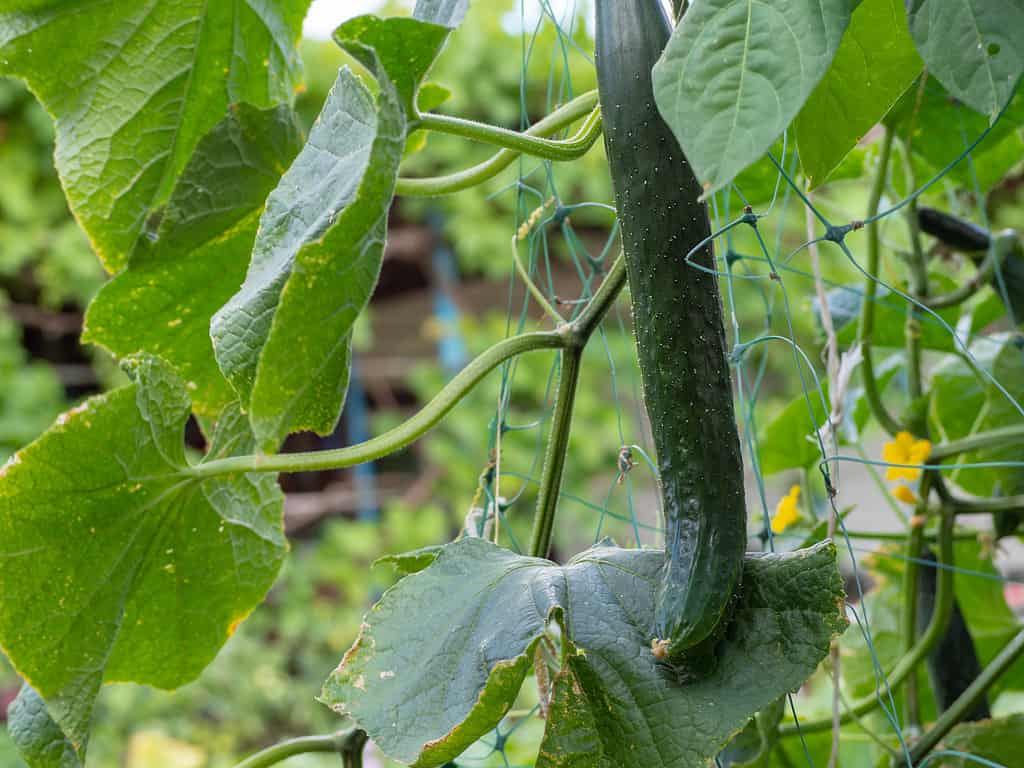
Cucumber vines can twist around sunflower stalks.
©Aleksandr Krotkov/iStock via Getty Images
Tall sunflowers can act as a trellis for cucumber vines and provide much-appreciated shade. Sunflowers also offer some pest control, as some of the insects attracted by the large flowers eat harmful cucumber beetles.
4. Peppers (Capsicum annuum)
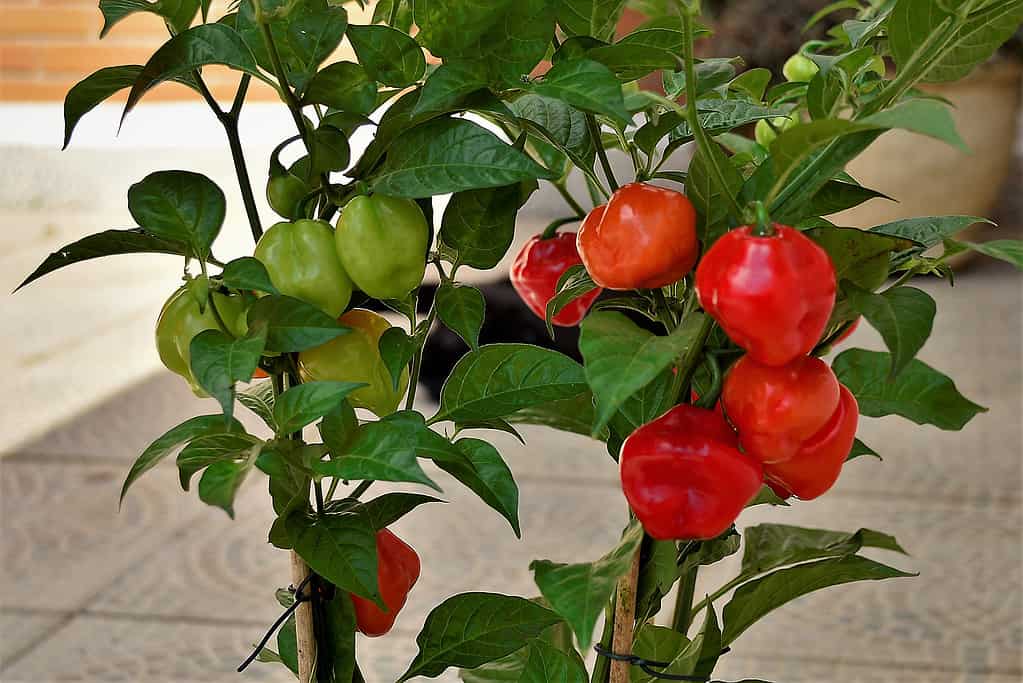
Most peppers benefit when they’re planted close to sunflowers.
©iStock.com/NancyAyumi
Peppers can be plagued by aphids. The pesky creatures will go away if sunflowers are nearby, as sunflower nectar attracts aphid-eaters like ladybird beetles.
5. Lettuce (Lactuca sativa)
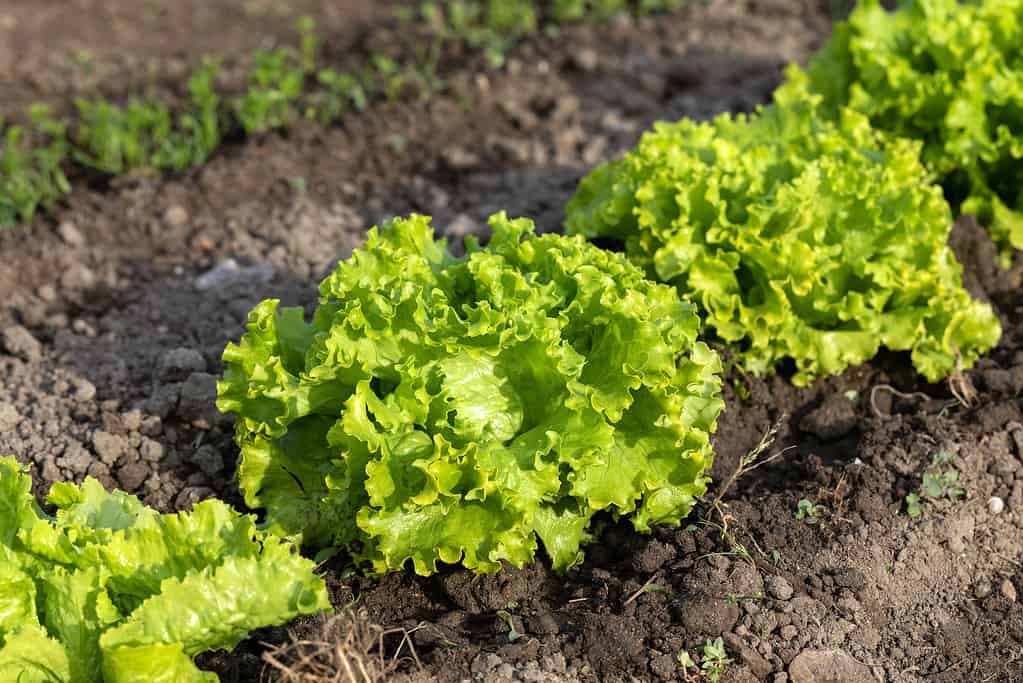
Lettuce and sunflowers are both in the
Asteraceaefamily.
©Thomas Pajot/iStock via Getty Images
As members of the Asteraceae family, lettuce and sunflowers are natural garden mates. Lettuce tends to wilt when exposed to too much heat and sunlight, a big risk during summer. Sunflowers block some of the sun’s rays.
Sunflower Companion Plants: Herbs
Planting herbs as companion plants makes a lot of sense. Here’s why.
1. Chives (Allium schoenoprasum)
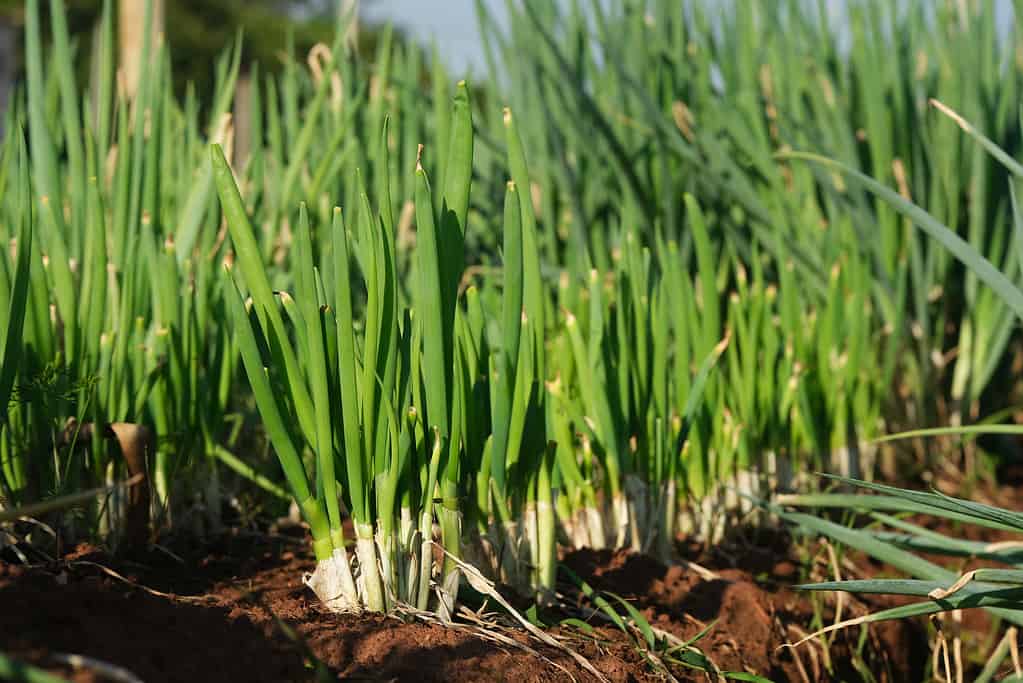
You can grow chives, onions, and sunflowers together.
©JR Slompo/iStock via Getty Images
Sunflowers and chives make a pair because chives have a shallow root system and need few nutrients. Sunflowers have room to grow freely. And chives have an onion-like smell that keeps sunflower predators away.
2. Basil (Ocimum basilicum)
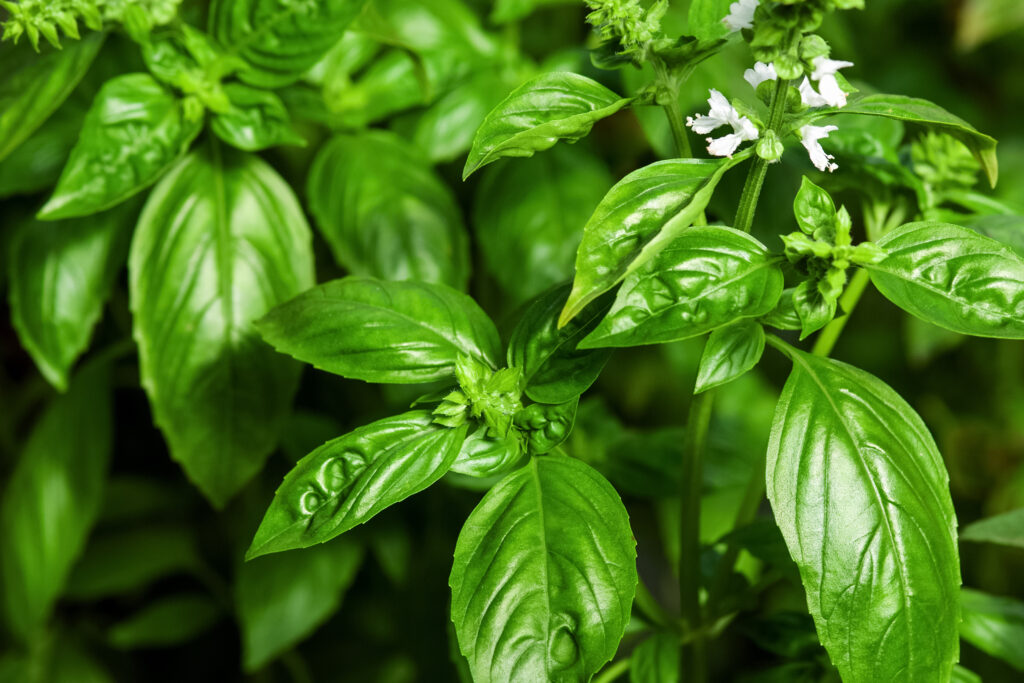
Sweet basil has bright green leaves that can burn with too much sunlight.
©Nadya So/Shutterstock.com
Basil likely already exists in your kitchen. Add some to your garden with sunflowers as protectors. The tall flowers keep basil out of direct sunlight when planted correctly.
3. Sage (Salvia officinalis)
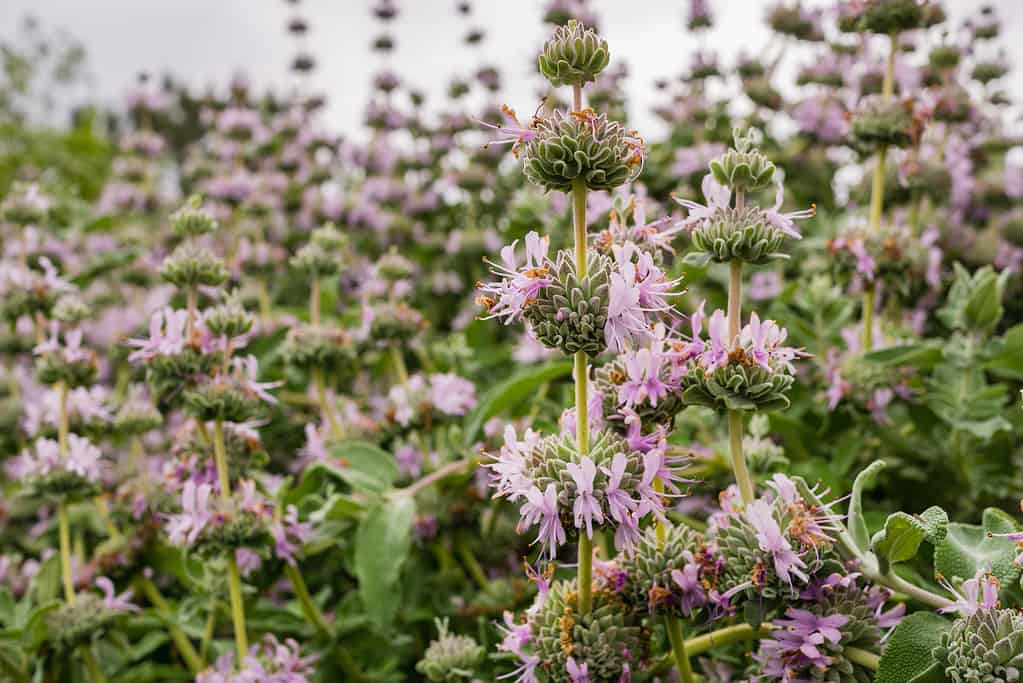
Sage plants look pretty, but they can repel insects.
©Sundry Photography/iStock via Getty Images
Many gardeners plant sage as a pest repellant. That’s one reason why sage is a sunflower companion plant. Another reason is that sunflowers can provide protective cover when the sage plants are young, encouraging more growth. When mature, sage plants are tall and ready for full sunlight.
Sunflower Companion Plants: Fruit
Does a garden full of luscious, ripe fruit and tall sunflowers appeal to you? Here’s what to grow to make it happen:
1. Tomatoes (Solanum lycopersicum)
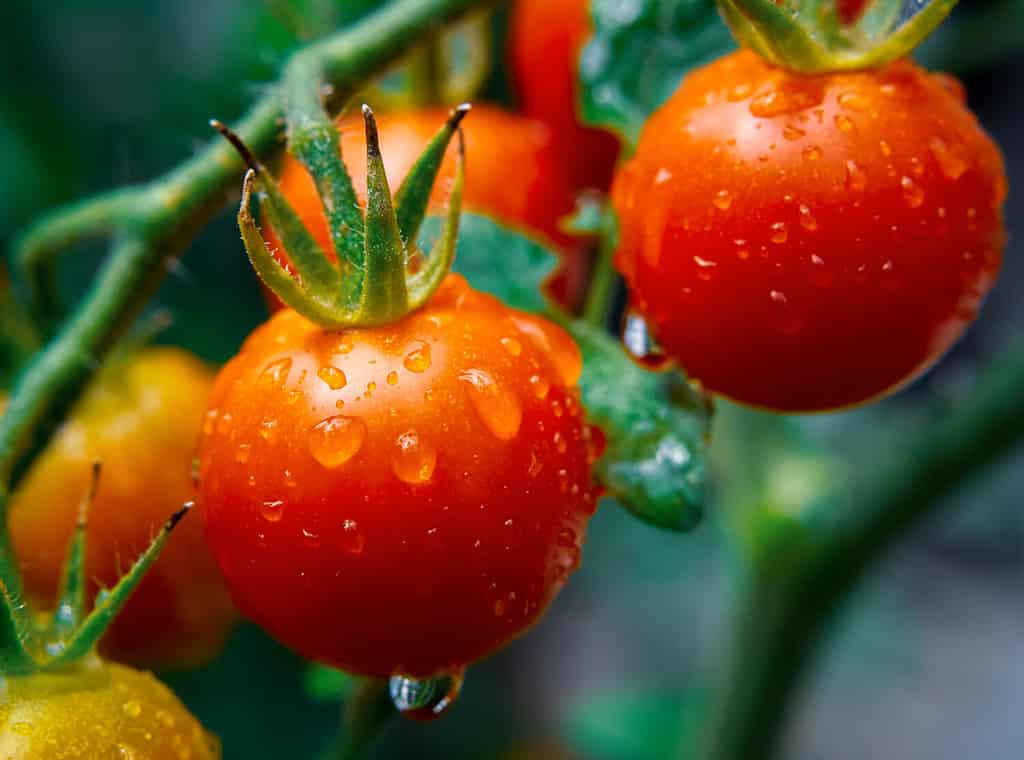
Tomatoes are among the most common sunflower companion plants.
©Shannon Birchler/Shutterstock.com
Sunflowers gain additional pollinators when planted next to tomatoes, while the tomatoes receive protection from insects like cutworms, stink bugs, and fruit worms. The insects will be too distracted by sunflower nectar to attack the tomatoes.
2. Pumpkins (Cucurbita maxima)
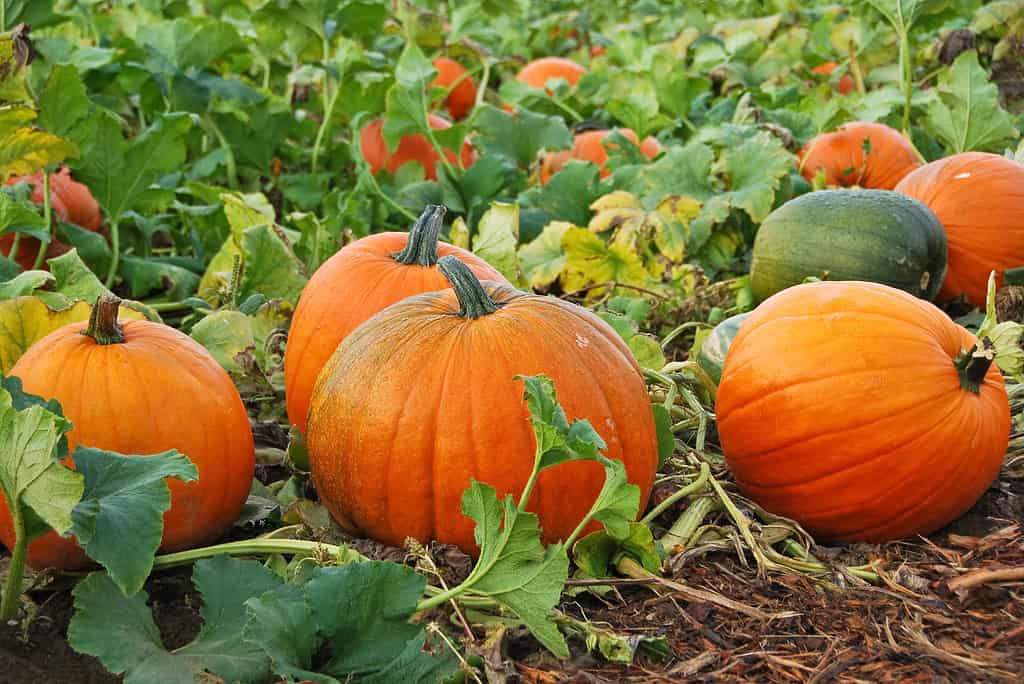
Orange pumpkins and yellow sunflowers create a colorful garden.
©Loren L. Masseth/Shutterstock.com
For easy pollination, plant your pumpkins near sunflowers. Pumpkin plants are low to ground and don’t attract as broad a range of insects. However, the low stature and large leaves mean that pumpkins can help keep the soil moist and healthy.
3. Melons (Cucumis melo)
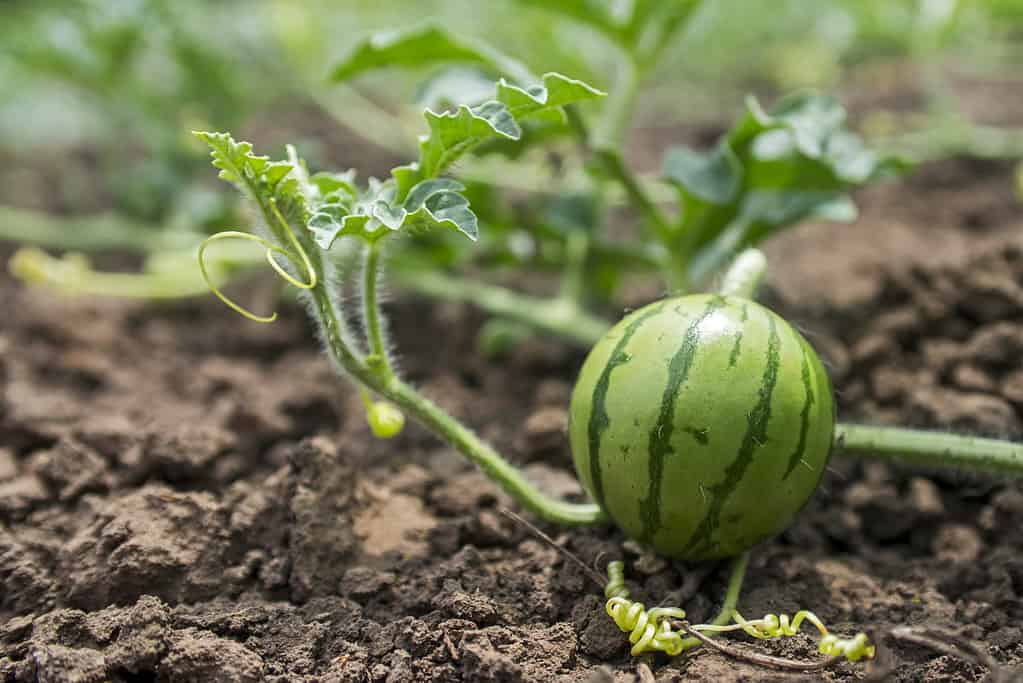
Most of the melon plant is ground level, where its leaves can shelter the soil and keep moisture in.
©Andrii Spy_k/Shutterstock.com
Melon vines can wrap around the sunflowers’ stalks as they grow. The rest of the melon plant is ground-level, convenient for crowding weeds that might otherwise damage your sunflowers.
What Is Sunflower Allelopathy?
Sunflower roots exude compounds called allelochemicals that can limit the growth of nearby plants. It’s a defense strategy that saves nutrients and root space for the sunflower.
However, some plant species are more affected by sunflower allelopathy than others.
Plants You Should Never Grow With Sunflowers
Avoid growing these plants next to sunflowers if you want a healthy garden.
1. Potatoes (Solanum tuberosum)

Sunflowers and potatoes should be planted far apart.
©Parilov/Shutterstock.com
Potatoes can have their growth stunted when exposed to the sunflower’s allelochemicals. The sunflowers also make it harder for the potatoes to obtain sufficient nutrients from the soil.
2. Fennel (Foeniculum vulgare)
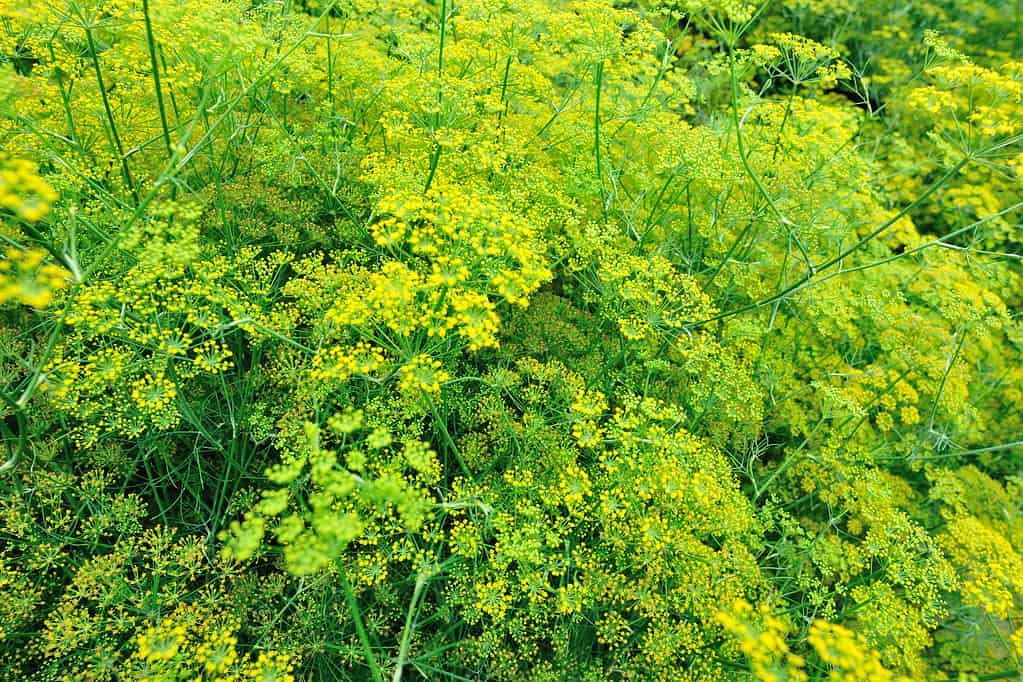
Fennel likes to grow alone.
©lzf/Shutterstock.com
Unfortunately, fennel and sunflowers simply do not mix. This time, it’s the sunflowers that may experience slower growth. Fennel is also allelopathic, and many plants react to the chemicals it releases.
3. Pole Beans (3 Varieties: Phaseolus vulgaris, Phaseolus coccineus, or Vigna unguiculata subsp. sesquipedalis)
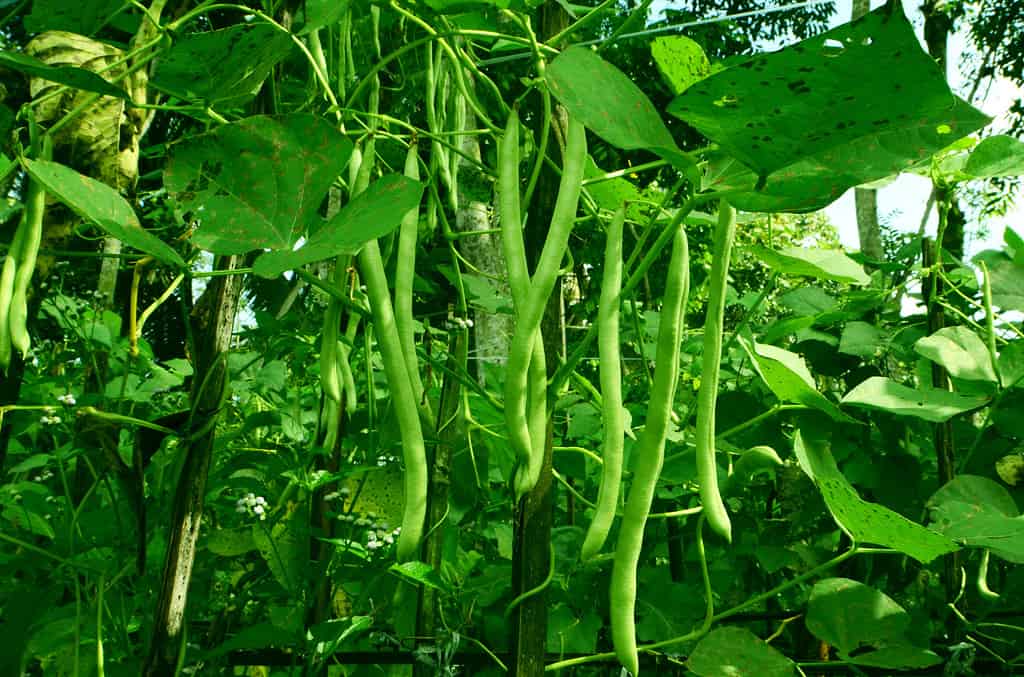
Pole bean stalks are too long and unwieldy to grow next to sunflowers.
©iStock.com/wahid hasyim asyari
You might be tempted to plant pole beans with your sunflowers because these types of beans grow wonderfully with tall plants like corn. However, pole beans can become twisted in stalks. They’re also susceptible to damage from sunflower toxins.
Sunflower Companion Planting Advantages
- Diverse plants can attract more insects, including pollinators.
- Sunflowers can offer valuable shade and protection from the elements.
- You can use fewer pesticides. Some companion plants have insect-repellant properties.
- It’s good for your soil.
Thank you for reading! Have some feedback for us? Contact the AZ Animals editorial team.

